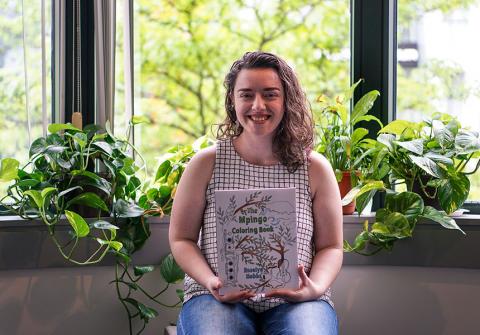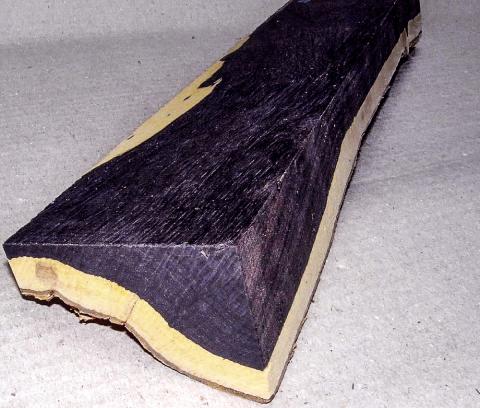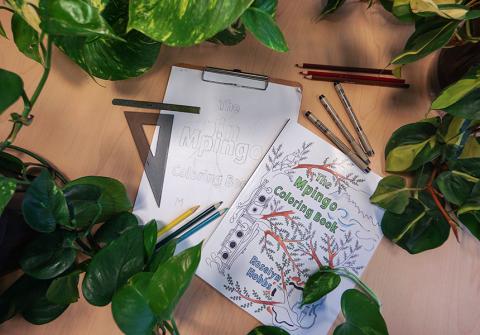Sustaining the Tree of Music

Roselyn Hobbs, a contemporary classical music graduate student, recently published The Mpingo Coloring Book to bring visibility to the mpingo tree, a species in danger of being over-harvested, and the source of a variety of orchestral instruments.
Photo credit: Michelle Parkos
Musicians typically have a solid technical understanding of their instruments, but they may not be as familiar with the origins of the wood that makes up their clarinet or piccolo—and the impact on both the environment and local communities where these trees are harvested. Such concerns are top of mind for violist Roselyn Hobbs (M.M. '18), a contemporary classical music graduate student at Boston Conservatory at Berklee.
In April 2018, Hobbs authored, illustrated, and self-published The Mpingo Coloring Book to bring visibility to the mpingo tree, one of the most valued and expensive lumbers in the world. Prized for its density and durability, the heartwood of the mpingo (also called the African blackwood) is commonly used to make woodwind instruments such as the clarinet, oboe, and English horn, as well as various components of string instruments and pianos. Appropriately dubbed the “tree of music,” it is currently in danger of being over-harvested.

Hobbs’s coloring book was inspired by her time working as a volunteer with the Daraja Music Initiative (DMI), an organization that promotes mpingo sustainability through music education in Moshi, Tanzania. Hillary Hendon, her undergraduate viola teacher from the University of Tennessee, Knoxville, told Hobbs about the project following her first visit to the program. “Hillary knows I’m a plant nut,” she says. “Whenever I go to summer festivals, I research the native plants and sketch them.”
Hobbs, whose father was president of the International Palm Society, traces her fascination with trees back to childhood trips with her family to botanical gardens and jungles. She stopped short of minoring in plant sciences as an undergraduate, so when she learned about DMI, she was thrilled at the opportunity to combine her passions for music, tree conservation, and educational outreach.
“I love to teach, both in the U.S. and in Africa. For me, the coloring book project was about educating people in our country about a tree that is so important to orchestral music. It’s two-way teaching,” Hobbs says.
2018 marks her third summer volunteering with DMI. Having learned Swahili during her first volunteer trip, her work consists of teaching violin, viola, and cello lessons to primary and secondary school students and participating in mpingo tree plantings at schools located in the foothills of Mount Kilimanjaro. During the plantings, she and her fellow volunteers educate students about the mpingo and demonstrate which parts of their instruments are sourced from the tree.
The national tree of Tanzania, local artisans use the mpingo for medicinal purposes and to craft furniture and decorative wood carvings. Its dense, fine-grain wood, which makes it so valued among musical instrument manufacturers, is also what makes it difficult to cut down. The tree itself is small, and due to its gnarled, twisted branches, a large portion of the wood is wasted when harvested for instrument manufacture. Most significantly, it takes more than 70 years before the tree reaches a harvestable age.
“As musicians, it’s our responsibility to create a sustainable future for the mpingo, which is why we return to Tanzania year after year,” says Hobbs. Many of her students at DMI also return each year for music lessons. Although they are socioeconomically disadvantaged and limited by scarcity of resources, she explains that music education not only serves as a critical creative outlet, but also “helps students with with teamwork, communication, and problem solving.”
Hobbs says that the coloring book has so far been used primarily by music educators, although it is intended for anyone who likes to color and wants to learn about the tree. All proceeds from The Mpingo Coloring Book are going directly to music education, conservation education, and tree plantings in Tanzania. Learn more about The Mpingo Coloring Book.

